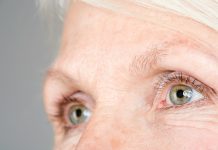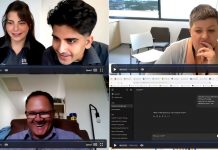
Recovering from a stroke can be a challenging journey, especially when it comes to regaining hand function, which is crucial for everyday activities like dressing, eating, and writing.
Strokes can damage parts of the brain that control movements in the hands, leading to weakness or paralysis. However, there are effective strategies and therapies that can help improve hand function post-stroke.
This review explores these methods, providing hope and practical advice for stroke survivors and their caregivers.
One of the most established approaches to improving hand function after a stroke is physical therapy. Physical therapists often use exercises that focus on regaining strength, flexibility, and range of motion.
These exercises might include tasks like gripping or releasing objects, turning the wrist, and finger movements that improve fine motor skills.
Research has shown that regular, repetitive practice of these exercises can significantly enhance muscle strength and coordination by encouraging the brain to relearn lost skills.
Occupational therapy is another critical component in recovery. Occupational therapists help stroke survivors learn new ways to perform daily tasks that can be challenging after a stroke.
They might introduce adaptive tools, like specially designed kitchen utensils or writing instruments, that make it easier to grasp objects.
They also focus on improving fine motor skills, which are essential for handling small objects, using a combination of targeted exercises and real-life activities.
In recent years, technology has started playing a significant role in rehabilitation. For example, robotic therapy provides automated assistance to move the fingers, wrist, and arm in a controlled manner.
These robotic devices help patients perform movements that aid in recovery when they can’t do so on their own.
Studies, including those published in journals like Stroke, have reported that robotic therapy can lead to improvements in hand function, especially when combined with traditional physical and occupational therapy.
Another promising technology is virtual reality (VR). VR systems create a computer-generated environment where stroke survivors can practice hand movements in a simulated, but safe and controlled, setting.
These activities are not only therapeutic but also engaging and motivating. Research has indicated that VR can significantly improve motor function by immersing patients in interactive tasks that mimic everyday activities.
Electrical stimulation is a technique that applies small electrical pulses to weak or paralyzed muscles. This stimulation can help enhance muscle strength and control by activating the nerves that control the muscles.
The repeated use of electrical stimulation can help improve the range of motion and coordination of the hand and fingers, making it easier to perform tasks like grabbing or holding objects.
Mirror therapy is another innovative and simple practice. In this therapy, a mirror is placed between the patient’s arms, reflecting the healthy hand and making it appear as if the affected hand is moving normally.
This visual illusion can stimulate the brain to improve the mobility of the affected hand. Clinical trials have shown that mirror therapy can significantly enhance hand function and reduce discomfort in stroke survivors.
Finally, incorporating everyday activities into therapy can be very effective. Called task-oriented training, this approach involves practicing specific tasks that a person needs or wants to do in their daily life.
This method helps make the rehabilitation process more practical and relevant, encouraging patients to keep engaging in their therapy while making noticeable improvements in their daily functioning.
In conclusion, recovering hand function after a stroke involves a combination of well-established and innovative therapies.
Regular practice, consistency, and the use of multiple therapeutic approaches tailored to an individual’s specific needs are key to achieving the best outcomes.
With ongoing research and advancements in technology, the prospects for recovery continue to improve, offering hope and support to those on the path to regaining their independence and quality of life.
If you care about stroke, please read studies that diets high in flavonoids could help reduce stroke risk, and MIND diet could slow down cognitive decline after stroke.
For more health information, please see recent studies about antioxidants that could help reduce the risk of dementia, and tea and coffee may help lower your risk of stroke, dementia.
Copyright © 2024 Knowridge Science Report. All rights reserved.



